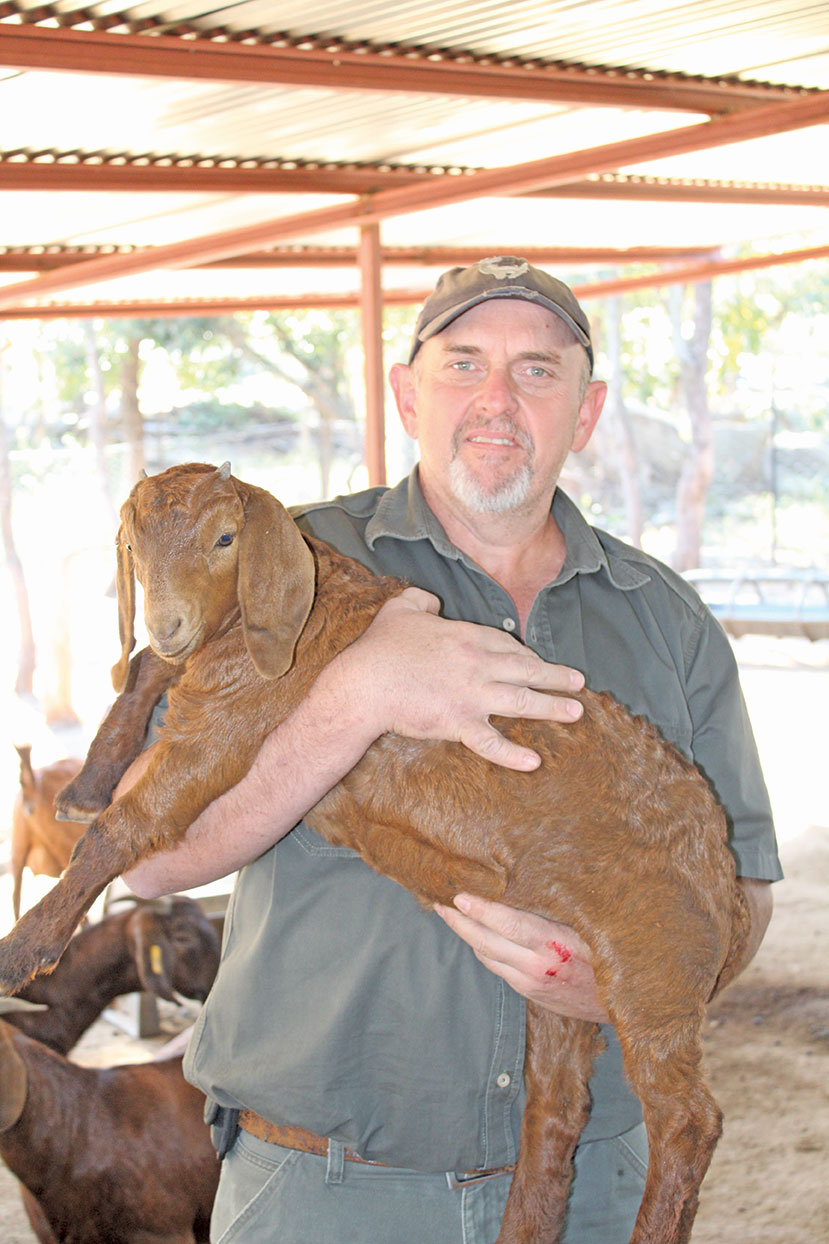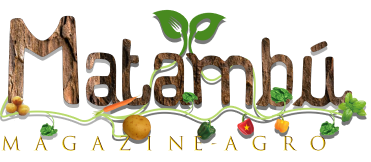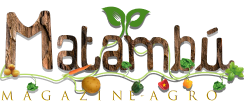[ad_1]
Kalahari Red goat farmer Eddie Goosen is constructing his stud by shopping for animals from breeders who can show full traceability of their lineage. He spoke to Lindi Botha about his meticulous choice course of and the way this has already paid dividends in two years.
Photo: Lindi Botha
As the saying goes, it takes years to construct a reputation, however solely minutes to lose it. In the case of a stud breeder, one inferior gene can diminish the standard of a complete herd and erase all of the exhausting work of earlier years.
While Eddie Goosen, proprietor of Maggiesdal Kalahari Red Goat Stud close to Mbombela, Mpumalanga, is comparatively new to the enterprise, he understands the significance of laying a powerful genetic basis at the beginning.
“Developing a successful stud farm takes time, because you’re building not just the quality of your herd, but also your reputation. And without a good reputation, you can’t really make a success of stud farming, because people want to know that they’re getting what they paid for. There needs to be a system of genetic traceability in place that you can trust,” he explains.

Although not new to farming, Goosen began constructing his Kalahari Red stud simply two years in the past. The gleaming auburn coats of those goats caught his eye at livestock reveals, and when he was made a suggestion for his whole Dexter cattle herd, he determined to change species. Today, he has a herd of 90 ewes and two rams.
“I purchased my first ram from champion breeder Josef Kleynhans. My second, bought from Anton Bothma, is the son of a world champion Kalahari Red, and a large part of my herd is progeny from that ram. I bought the stud ram I’m using at the moment from Albie Horn.”
Boosting the identify of a newbie stud
Goosen says that purchasing rams from champion breeders is significant, because it lends credibility to his personal stud.
“Besides the standard you get, you’re additionally capable of construct your reputation primarily based on the calibre of animals you retain and the place they arrive from.
“My Maggiesdal stud is still relatively unknown and farmers might not want to pay higher prices for my animals, but the fact that my herd is the progeny of animals bred by the Kleynhanses and Bothmas of the goat industry immediately gives gravitas to my goats. This makes it easier to fetch higher prices.”
Strict choice
Goosen locations the rams completely with the ewes and permits pure breeding to happen. Although the kidding season begins in May, he isn’t restricted to a particular breeding season because the goats are farmed intensively.
However, he seeks to broaden his herd as rapidly as potential, so goals for 3 kidding seasons in two years. He achieves a kidding proportion of 150%, with weaning weights of 25kg and 20kg for rams and ewes respectively. All rams are offered once they attain 50kg, together with any feminine animals that don’t meet the choice standards.
Goosen selects in opposition to white colouring. He additionally appears for good construct, and uniform horns which are bent near the top. In ewes, he goals for good maternal instincts, paying specific consideration to good milk high quality and the elevated probability of manufacturing twins.
Kids ought to attain 50kg by the point they’re between eight months and one 12 months of age.
First-time moms are saved in a separate camp nearer to the home in order that Goosen can watch them extra simply and guarantee they and their children stay in good situation.
“Their udders often become blocked by a hard plug that forms on the tip and the kids can’t drink,” he explains.
“The udders just need a hard squeeze to get the plug out, and then the milk flows. It’s important that the kids get the colostrum and continue to drink enough from their mothers. If I see a kid that needs a bit of a boost, I feed it extra milk from ewes whose kids have been weaned. We milk these ewes so they don’t get mastitis, and then freeze the milk for such occasions.”
Keeping the herd wholesome requires vigilance. Goosen ensures that every goat in his herd is noticed no less than twice a day in order that any issues will be noticed rapidly and swift motion taken if required.
Herd well being
Despite being on the Lowveld, Goosen’s Kalahari Red goat stud experiences few issues with ticks and different ailments. Winter temperatures dip to a minimal of 8°C, with the occasional -2°C in an excessive chilly entrance. In summer time, temperatures can attain a most of 40°C.
The excessive humidity, nevertheless, does contribute to an elevated prevalence of caseous lymphadenitis, a contagious bacterial illness that manifests as abscesses of peripheral or inner lymph nodes and organs.
“It’s a general problem with goats, but it seems to be very prevalent here. Once it’s in your herd, it spreads quickly. Annual vaccination helps to [control] it, but because it’s so contagious, I’m very careful when releasing the discharge from the lumps, as it can get into the soil and reinfect the goats.”
Other ailments are saved in test with common inoculations and, in summer time, the goats are dipped as soon as every week in opposition to ticks.
“I used to be initially anxious about heartwater and made some extent of shopping for in animals from heartwater areas so they might be extra resistant. But I’ve by no means actually had an issue and have by no means misplaced a goat to heartwater.
“It’s important, though, to expose the goats to heartwater as well as using vaccines, so they can build up resistance and become immune.”
Pulpy kidney is one other downside illness, and to sort out it Goosen focuses on feed in addition to inoculation.
“We vaccinate against pulpy kidney and have a feed programme worked out specifically for our herd. The kids must be vaccinated against the disease within the first week and the ewes once a year.”
Since the herd grazes 20ha of pure veld in the course of the day, the camps should be saved freed from Lantana camara, a infamous weed that’s poisonous to goats, affecting their kidneys and sight.
“This is really a massive problem. There’s a joke in our family that if they’re searching for me they’ll find me in the bush, where I’’ll be chopping down Lantana. It takes up a lot of time!”
In addition to the pure veld, the goats additionally graze 2ha of pasture planted to Brazseed.
Grazing makes up solely 30% of their meals, nevertheless; the stability is offered by a feed combination comprising maize, sheep fats, lucerne and molasses. The herd is fed twice a day throughout kidding season and as soon as a day when not in manufacturing.
“I don’t believe it’s possible to reach the goal of having a superior stud without the right nutrition and additional feeding,” says Goosen.
“Nutrition impacts fertility and weaning proportion, and the earlier the children are
weaned, the earlier the ewes can get again to good situation and child once more.
“The ewes also kid more easily when they’re in good condition; if you skimp on nutrition, you’ll see it in the kidding.”
Traceability
Stud breeders purpose to breed the proper animal, so figuring out which genetics are already within the gene pool and that are lacking is essential. Goosen due to this fact takes care when deciding on animals, paying shut consideration to the complete pedigree as specified by SA Studbook.
“I don’t buy animals that are not registered with SA Studbook,” he says. “It’s essential to know the historical past of the animal, which traits you’re coping with, and which genes should be bred in.
“The Kalahari Red gene pool is reasonably small, so there’s a danger of inbreeding. This is why traceability is so essential.
“SA Studbook indicates the percentage that the animal has already been inbred. When you’re buying an animal, you need to know which genetic lines you can breed it with, otherwise you increase the inbreeding.”
Goosen believes that sooner or later it will likely be the norm for all stud animals to be registered with SA Studbook, notably as registered animals fetch a premium due to their traceability.
He learnt the worth of SA Studbook the exhausting manner. After buying quite a few animals from two farmers in several areas, he found lengthy afterwards, by way of SA Studbook, that each one these animals had, actually, originated from one farm. By then, sadly, that they had already been mated and this had resulted in inbreeding.
“It was an expensive mistake. It’s so important to do your research and select animals with care.”
Goosen notes that the breed is changing into extra wanted and that is leading to increased costs costs on the hoof than on the meat market.
Email Eddie Goosen at [email protected].
[ad_2]
Source link










